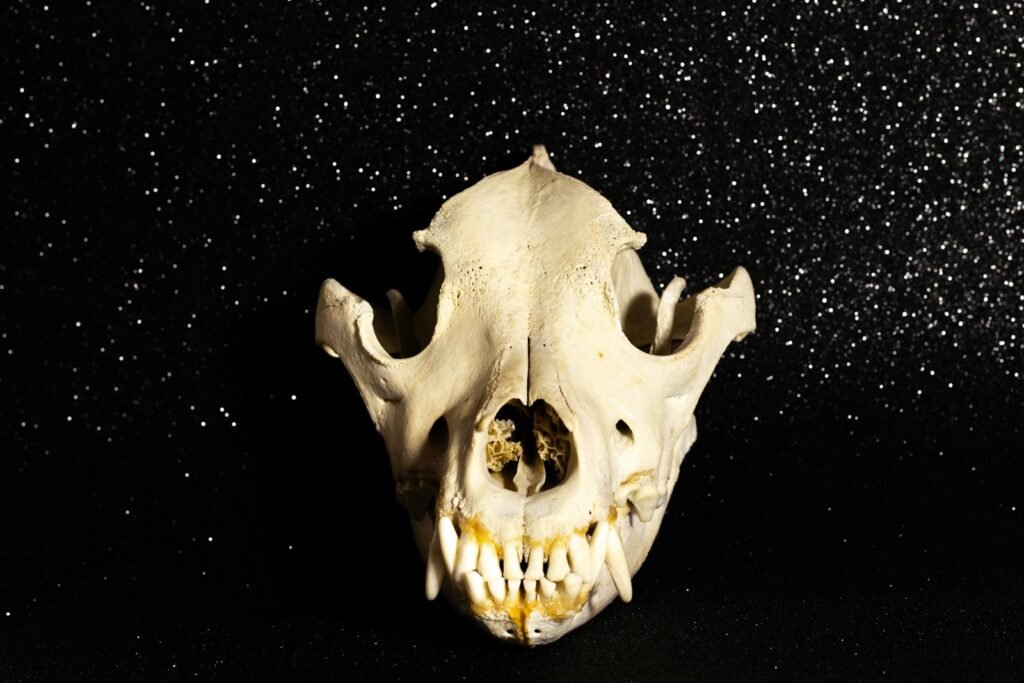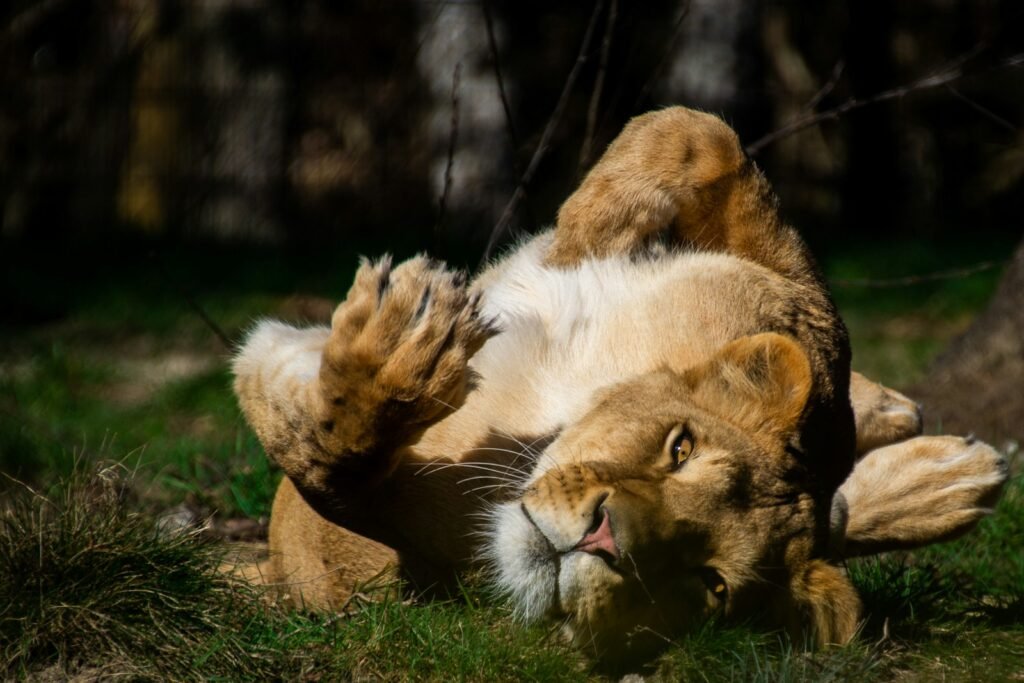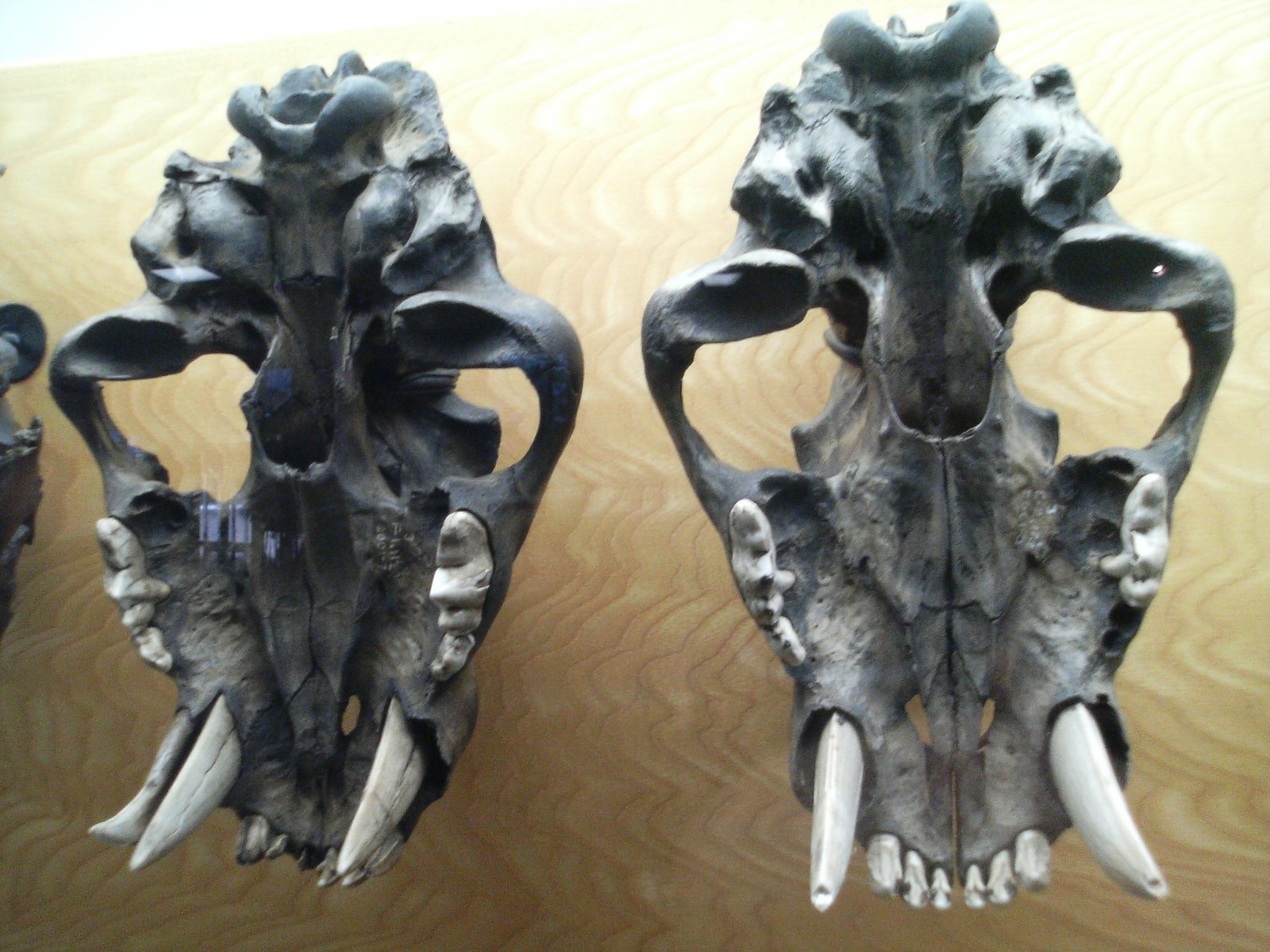Imagine a world where housecats are dwarfed by saber-toothed giants, and the most fearsome predators roam icy plains and shadowy forests. The Pleistocene epoch, stretching from about 2.6 million to 11,700 years ago, was a golden age for monstrous felines. These ancient cats weren’t just big—they were breathtakingly bizarre, powerful, and downright terrifying. Ready to meet the ultimate feline chaos-bringers? Let’s leap into the wildest catwalk in history.
Smilodon — The Saber-Toothed Superstar

Smilodon, famously dubbed the saber-toothed tiger, wielded massive 11-inch fangs capable of slicing through the thick hides of Ice Age giants. Despite the fierce nickname, it wasn’t closely related to modern tigers—instead, it was a one-of-a-kind predator with a stocky, bulldog-like frame built for power over speed. Imagine a muscular cat launching itself onto prey with a bone-crushing bite, jaws wide in a terrifying display. One flash of those saber-like teeth was enough to make even the toughest rivals think twice—its fearsome grin was nature’s ultimate warning sign.
Homotherium — Scimitar Cat with a Sprint

Homotherium’s curved, scimitar-like teeth may have been shorter than Smilodon’s, but they were no less lethal—perfect for slicing through flesh with brutal efficiency. Unlike its more muscular cousin, Homotherium was built for speed and endurance, with a long, lanky frame ideal for sprinting across icy plains. This saber-toothed sprinter often hunted in coordinated packs, working together to bring down massive prey like juvenile mammoths. Picture cheetah-like agility paired with saber fangs—an Ice Age nightmare come to life for any unsuspecting herbivore.
Megantereon — The “Small” Sabercat with a Vicious Streak

Megantereon may have been smaller than the mighty Smilodon, but it packed a deadly punch with saber teeth designed for swift, surgical kills. This agile predator was a master of ambush, silently lurking in dense underbrush or rocky terrain before striking with lethal precision. Its stealth and power were so legendary that some researchers believe it may have inspired ancient cave art and myths. With a ghost-like presence and a killer’s instinct, Megantereon was the silent assassin of the saber-toothed world.
Panthera atrox — America’s Giant Lion

Panthera atrox, the mighty American lion, dwarfed its modern relatives—measuring nearly 25% larger than today’s African lions. This prehistoric powerhouse roamed from the icy reaches of Alaska to the warm plains of Peru, dominating a vast and wild continent. With the strength to bring down massive prey like bison and horses, it ruled the Pleistocene with unmatched ferocity. Imagine a lion on steroids, thundering across ancient landscapes like a muscular, roaring tank built for conquest.
Xenosmilus — The Prehistoric “Cookie-Cutter” Cat

Xenosmilus wasn’t your typical saber-toothed predator—instead of delicate slashes, it tore out huge chunks of flesh with its powerful jaws, earning the chilling nickname “cookie-cutter cat.” With a stocky, muscular build and formidable strength, it was built for brute force, not finesse. Fossil evidence suggests it may have hunted in groups, using teamwork to overwhelm large, struggling prey. Think of it as the all-star linebacker of ancient cats—low to the ground, brutally efficient, and devastating on impact.
Fangs for Days: Why Sabers Were So Popular

Why did so many Pleistocene cats evolve those dramatic saber teeth? Those elongated canines were perfectly suited for puncturing the tough hides of colossal prey like mammoths and giant ground sloths. Far more than just flashy accessories, they were precision tools for delivering quick, fatal bites—nature’s version of a Swiss Army knife. Deadly, versatile, and undeniably intimidating, saber teeth were the ultimate upgrade in a world built for giants.
Pack Hunters or Lone Wolves? Social Lives Revealed

Some saber-toothed cats, like Homotherium, are believed to have hunted in coordinated packs, combining speed and strategy to take down massive prey. In contrast, the stockier Smilodon likely preferred a lone, stealthy approach—lurking in the shadows and ambushing with brute force. These ancient predators didn’t just differ in fang shape—they led vastly different lives shaped by environment, anatomy, and hunting style. Their lifestyles were as diverse and fascinating as the saber teeth they wielded.
Prey of Monsters: What Was on the Menu?

Pleistocene cats were apex predators that targeted a jaw-dropping range of prey—from towering ground sloths to vulnerable baby mammoths. Armed with crushing jaws and razor-sharp claws, they ruled the food chain, even challenging other top predators when the stakes were high. Their sheer strength and ferocity meant that few creatures were truly safe. Picture a saber-toothed cat leaping onto a bison twice its size, muscles rippling and fangs flashing—wild doesn’t even begin to cover it.
Claws Like Daggers: Weaponized Paws

These ancient felines wielded claws like living blades—sharp, curved, and capable of slicing through flesh and bone in a single swipe. Many species had retractable claws, keeping them razor-sharp for that perfect ambush moment. One sudden strike, and their prey was down before it knew what hit them. If you’ve ever been on the wrong end of a housecat’s swipe, imagine that force magnified a thousand times—now you’re in saber-tooth territory.
Fur Coats Built for Ice Age Winters

Surviving the icy grip of the Pleistocene required more than muscle—it meant being wrapped in thick, luxurious fur built for brutal cold. Picture a saber-toothed cat draped in a dense, regal coat, its mane rippling in the wind as it prowled through snowdrifts like a prehistoric snow leopard on the hunt. This fierce predator was both insulated and intimidating, blending warmth with raw power. Cozy to look at, perhaps—but make no mistake, it was pure Ice Age menace beneath the fluff.
The Ultimate Ambush Artists

Many Pleistocene cats were elite ambush predators, relying on camouflage, silence, and relentless patience to outwit their prey. Blending seamlessly into forests, grasslands, or snowy terrain, they would lie in wait—motionless and unseen—until the perfect moment to strike. It was the ultimate high-stakes game of hide and seek, where the price of being found was fatal. In this ancient battlefield of stealth and survival, one wrong move meant becoming the main course.
Territory Wars: Cat vs. Cat

Competition was fierce among these apex predators. Battles for territory could be brutal, with saber-toothed cats squaring off against giant bears, wolves, and each other. Imagine a turf war where the stakes were survival itself.
Baby Sabers: Cute or Catastrophic?

Saber-toothed kittens might sound cute, but they were anything but cuddly—born with oversized paws, stubby saber teeth, and a fierce spark in their eyes. From their first wobbly steps, these miniature predators were already gearing up for life at the top of the food chain. They likely learned to stalk and pounce almost as soon as they could walk, sharpening their skills through rough play and early hunts. Picture a fluffball with training-wheel fangs and a built-in survival instinct—adorable, yes, but also dangerously determined.
Disappearance Act: The End of a Feline Era

Most of these formidable cats disappeared around 10,000 years ago, likely driven to extinction by a deadly mix of climate shifts and increasing competition from early humans. One moment, the world echoed with the roars of saber-tooths and other wild felines—and the next, their reign was over in a dramatic, final act of the Ice Age. It was a grand finale written in melting glaciers and sharpened spears. Now, only their bones remain, silent echoes of a vanished wild kingdom.
Bite Force: Jaw Power That Crushes

Saber-toothed cats weren’t just famous for their massive fangs—they backed them up with jaw muscles that packed a serious punch. Some species could deliver bone-crushing bites, strong enough to pierce through armor-like hides of Ice Age giants. These predators were living power tools, combining precision with brute force in every kill. It wasn’t just a bite—it was a prehistoric monster mash in full, ferocious swing.
Eyes Like Spotlights: Night Vision Masters

Many Pleistocene cats were nocturnal hunters, perfectly adapted to low light with oversized eyes that could catch even the slightest movement in the dark. Their keen night vision gave them a deadly edge, turning dusk and darkness into their personal hunting grounds. Imagine glowing golden eyes silently tracking you through the shadows—an eerie, primal gaze that sent chills down the spines of ancient prey. In the world of Ice Age predators, the night truly belonged to the cats.
Speed Demons: The Cheetahs of the Past

Some prehistoric cats, like Homotherium, were sleek, long-limbed sprinters built for chasing down prey across vast, open grasslands. While they didn’t match the top speeds of today’s cheetahs, they combined impressive agility with something cheetahs lack—massive, curved saber teeth. These fearsome fangs added a terrifying edge, turning every chase into a high-stakes sprint followed by a deadly finale. Speed may have caught the prey, but intimidation—and those slicing sabers—sealed the deal.
Roars That Rumbled the Earth

Panthera atrox, the colossal American lion, likely had a roar so powerful it echoed for miles across the ancient plains. This wasn’t just a vocal warning—it was a sonic boom of dominance, sending shivers through rival predators and scattering prey before the hunt even began. Imagine a thunderclap wrapped in muscle and fur, shaking the Pleistocene silence with primal authority. One roar, and the entire Ice Age landscape listened.
Sibling Rivalry: Feline Family Feuds

Growing up in a saber-toothed family was anything but gentle—every day was a crash course in survival. Sibling kittens constantly wrestled, pounced, and ambushed one another, sharpening their skills through rough-and-tumble play. It was less playtime and more prehistoric boot camp, complete with claws, fangs, and plenty of growling. In this toothy training ground, every bite and tumble prepared them for life as Ice Age predators.
Tooth Trouble: The Downside of Sabers

Those massive saber teeth may have looked terrifying, but they came with serious risks—they could crack, snap, or even get lodged in tough prey during a struggle. Fossilized skulls with broken canines reveal just how dangerous and unpredictable the hunt could be. Despite their fearsome appearance, these apex predators walked a fine line between power and vulnerability. Even the fiercest cats had their flaws—and sometimes, their greatest weapons became their greatest liabilities.
Size Matters: The Biggest and the Baddest

Panthera atrox may have been the undisputed heavyweight of ancient cats, but even the so-called “smaller” felines of the Pleistocene dwarfed today’s big cats. Picture a housecat scaled up to lion size—then double it—and you’re still not quite there. These muscular predators roamed a world where size meant survival, and intimidation was part of the package. The Pleistocene wasn’t just wild—it was supersized, and definitely not for the faint of heart.
Skull Shapes: Built for the Kill

Each prehistoric cat had a skull custom-built for its hunting strategy, a lethal blueprint carved by evolution. Smilodon’s broad, robust jaws opened wide to unleash its saber teeth in a devastating downward sweep, perfect for precision killing. In contrast, Homotherium’s narrower snout and serrated fangs made it a flesh-slicing specialist, built for speed and efficiency. These skulls weren’t just bones—they were nature’s ultimate weapons, engineered for domination on the Ice Age battlefield.
Fossil Finds: Secrets in the Bones

Most of what we know about these ancient cats comes from the fossils they left behind—jawbones, teeth, and skeletons unearthed from tar pits, caves, and frozen tundra. Each fragment is a time capsule, whispering stories of brutal hunts, territorial battles, and the harsh realities of Ice Age life. These bones speak not only of survival and strength but also of missteps, injuries, and dramatic ends. In the silence of stone, they reveal a vivid, often violent world long gone.
Legends That Linger: Cats in Human Myth

Ancient humans didn’t just fear saber-toothed cats—they immortalized them in cave art, etching their powerful forms into stone with firelit reverence. These dramatic encounters weren’t just moments of survival, but stories passed down through generations, blending fact with myth. The cats left their mark not only on the land, but deep in the human psyche—symbols of raw power, danger, and respect. Even today, echoes of their presence still prowl through our imagination.
Modern Relatives: Echoes in Today’s Big Cats

Though saber-toothed cats vanished thousands of years ago, their legacy lives on in today’s lions, tigers, and leopards—modern echoes of a fierce and ancient lineage. Every powerful yawn, every stealthy step, carries the shadow of those long-extinct predators. When you watch a big cat stretch or stalk, you’re glimpsing a connection to a wilder, more primal past. It’s a reminder that the spirit of the Ice Age still prowls among us, hidden beneath fur and muscle.
Which of these Pleistocene cats would you love (or dare) to meet face-to-face?

Suhail Ahmed is a passionate digital professional and nature enthusiast with over 8 years of experience in content strategy, SEO, web development, and digital operations. Alongside his freelance journey, Suhail actively contributes to nature and wildlife platforms like Feline Fam, where he channels his curiosity for the Feline into engaging, educational storytelling.
With a strong background in managing digital ecosystems — from ecommerce stores and WordPress websites to social media and automation — Suhail merges technical precision with creative insight. His content reflects a rare balance: SEO-friendly yet deeply human, data-informed yet emotionally resonant.
Driven by a love for discovery and storytelling, Suhail believes in using digital platforms to amplify causes that matter — especially those protecting Earth’s biodiversity and inspiring sustainable living. Whether he’s managing online projects or crafting wildlife content, his goal remains the same: to inform, inspire, and leave a positive digital footprint.






